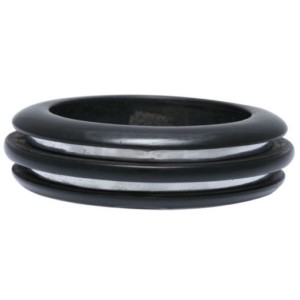(1852-1957) (1899-1994)
The famous and venerable house of Fouquet was founded in 1862 in Paris by Alphonse Fouquet. It is the work of his son, Georges, and his grand-son, Jean, however, that are of such great interest and importance.
Georges was born in 1852, and succeeded his father in the business just as Art Nouveau was becoming the dominant style in France. He was responsible for many of the most important jewels associated with this period, including several done in collaboration with the artist Alphonse Mucha. The Art Nouveau period was short lived, however, and he was in the interesting position of making the transition to the emerging styles of Art Deco. He wanted to participate in the enormously important 1925 Exposition des Arts Decoratifs et Industriels, and his aim was to show jewelry that was audacious and original. To this end, he worked with such artists and designers of the period as Eric Bagge and the great poster artist Cassandre.
Georges firmly believed that a jewel should suit the personality of the wearer. In 1927, he persuaded the couturier Jean Patou to present his jewelry along with Patou’s fashions. Unfortunately, the financial crises of 1929 put an end to that endeavor, and they declared bankruptcy in 1930.
In 1937, however, at the Exposition international des arts et des techniques dans la vie moderne, the name of Fouquet appears next to jewelry designed by the sculptor Lambert-Rucki, although the pieces were actually made by other workshops. They are, nonetheless, extra-ordinary and original pieces.
Jean Fouquet, son of George and one of the great artist-jewelers of the Art Deco movement was never directly involved in running the Maison Fouquet. He did, however, design for them, and his designs created between 1925 and 1931 were among the most audacious and innovative of the period. In 1925, he won an award at the Exposition des Arts Decoratifs et Industriels. From 1926 – 1928, he exhibited at the Salon des Artists Decorateurs.
Georges’ necklaces, bracelets, rings and brooches were resolutely modern in design and of imposing proportions. He expressed the opinion that ” jewelry should be considered as works of art,”. He favored white gold, with flat surfaces alternating with lacquered ones, and large stones, such as jade and aquamarine. He was a master at juxtaposing geometric elements and strong colors to achieve a balance that was harmonious, but never static.
He also used rock crystal, and one of his most striking creations is a bracelet and ring suite carved entirely of this material, its’ subtle curves given a matte finish and set with cabochon moonstones and faceted amethysts. This may well have been the first time that rock crystal was used in this way – as the entire body of the jewel – and many other designers, such as Suzanne Belperron, Rene Boivin and Mouboussin quickly picked up on this idea.
His work was in the same esthetic spirit as that of his contemporaries Raymond Templier, Paul Brandt and Girard Sandoz, and he was one of the founding members of l’UAM (Union des Artists Moderne). In 1930, he exhibited jewelry that was even purer in design. Geometric shapes were still the major elements, but the lacquer was less of a presence, and the forms were simplified and set with huge citrines or aquamarines.
For the 1937 exposition, the French government ordered two bracelets with matching rings. One was in yellow gold paved with topazes, the other with moonstone and amethyst. The shapes were no longer resolutely geometric – they reflected the stylistic trend toward softer curves and volumes. They were extra-ordinary, and can be seen today at the Musee des Arts decoratifs in Paris.
Georges Fouquet continued to design jewelry after WWII using gold wire and enamel, but they were pale shadows of his earlier work. In 1960, he completely ceased making jewelry.
Showing the single result


